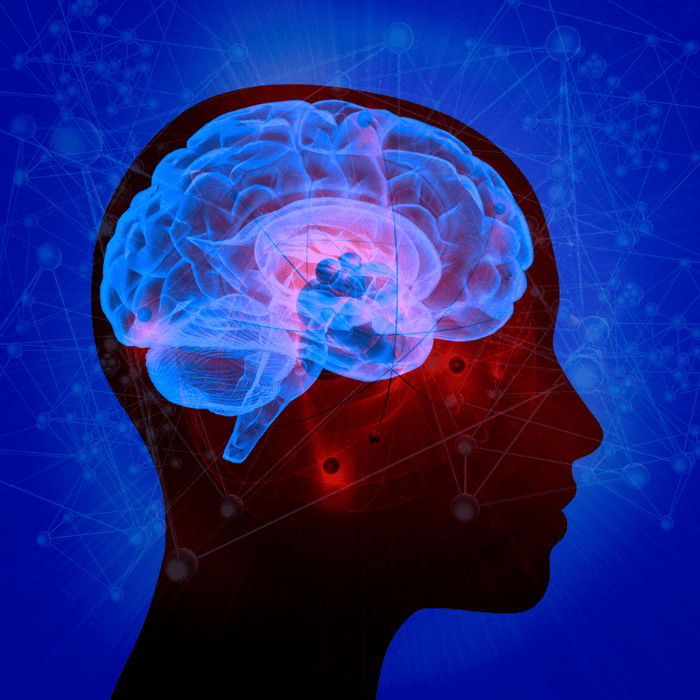Here’s a little transparency: Our website contains affiliate links. This means we may receive a small commission if you click and make a purchase. Don’t worry—there’s no extra cost to you. It’s a simple way you can support our mission to bring you quality content. Learn more at the Affiliate Disclosure page.

Understanding the Science Behind the Law of Attraction
Have you ever heard people say, “You become what you think about”? That’s the essential principle behind the Law of Attraction (LOA). Before you dismiss it as just another pie-in-the-sky idea, let’s dive into some serious discussions about its credibility. This isn’t just about wishful thinking; it’s about understanding whether this popular belief has an actual scientific underpinning.
What is the Law of Attraction?
The Law of Attraction suggests that our thoughts can direct the course of our lives. This principle posits that focusing on positive or negative thoughts can attract corresponding experiences into our lives. Popularized by self-help books and motivational speakers, the LOA has garnered a massive following. However, it’s essential to distinguish between anecdotal successes and scientifically backed results to form a well-rounded understanding.
Psychology and the Law of Attraction
Psychology offers some insights that resonate with the LOA. For instance, Cognitive Behavioral Therapy (CBT) is a psychological approach that emphasizes the role of thoughts in shaping our feelings and behaviors. CBT operates on the premise that by altering negative thought patterns, individuals can improve their emotional state and engage in more constructive actions. This is similar to the idea that positive thinking can lead to positive outcomes. Positive thoughts encourage actions that align with those thoughts, increasing the likelihood of achieving desired goals.
The Neurological Perspective: Neuroplasticity
From a neurological standpoint, neuroplasticity plays a crucial role in understanding the LOA. Neuroplasticity refers to the brain’s ability to reorganize itself by forming new neural connections throughout life. The thoughts we consistently focus on can influence the structure and function of our brain. For example, if you continuously focus on positive outcomes and engage in goal-setting practices, neuroplasticity may help reinforce pathways in the brain that support these behaviors. This can lead to improved performance and potentially better outcomes in various areas of life.

The Placebo Effect and LOA
The placebo effect provides another exciting perspective. This phenomenon occurs when individuals experience tangible improvements in their condition due to their belief in the efficacy of a treatment, even if the treatment itself is inactive. Similarly, a strong belief in a positive outcome, akin to the placebo effect, might lead to increased motivation and more effective action toward achieving that outcome. While this does not mean you can think your way into winning the lottery, it highlights how belief and mindset can influence our approach to challenges and goals.
Dr. Joe Dispenza’s Insights on Thoughts, Feelings, and Attraction
Dr. Joe Dispenza’s work centers on how our thoughts and emotions are powerful forces that shape our reality. According to Dispenza, the thoughts we entertain and the emotions we experience create an “electromagnetic field” around us that influences the people, situations, and opportunities we attract. In his book Breaking the Habit of Being Yourself (2012), Dispenza argues that our habitual thought patterns and emotional responses create neurological circuits in the brain. These circuits can become ingrained and lead us to perceive and interact with the world in specific ways.
Dispenza’s research highlights that changing our thoughts and emotions can rewire our brains and alter our experiences. His work on neuroplasticity supports the idea that positive thinking and emotional focus can create new neural pathways that align with our desired outcomes. This suggests that while we may not be able to think our way into winning the lottery, changing our mental state can indeed influence our behavior and experiences in meaningful ways.
Esther Hicks and the Law of Attraction
Esther Hicks, along with her late husband Jerry Hicks, has been a significant proponent of the Law of Attraction through their teachings as part of the Abraham-Hicks material. Esther Hicks teaches that we are each a powerful creator, and by aligning our thoughts with our desires, we can attract what we want into our lives. According to the Abraham-Hicks philosophy, our emotional guidance system helps us understand whether we are aligned with our desires. Positive emotions indicate alignment, while negative emotions suggest misalignment.
Hicks’ teachings emphasize the importance of maintaining a positive vibration and focusing on what we want rather than what we don’t like. This idea aligns with the LOA’s principle that focusing on positive thoughts can attract positive experiences. Hicks also introduces the concept of “vortex,” a state where all our desires are already aligned and waiting for us. By improving our emotional state and thought patterns, we can enter this state and attract what we want.
Scientific Studies and LOA Concepts
Scientific research supports some concepts related to the LOA, although only some of the theory. Studies on positive psychology, for example, show that gratitude and positive affirmations can enhance overall well-being and life satisfaction. Martin Seligman, a pioneer in positive psychology, has conducted research demonstrating that positive thinking can improve mental health outcomes. His work aligns with the LOA’s emphasis on maintaining a positive mindset to foster personal growth.
Influential Figures and Their Contributions
- Napoleon Hill: Hill’s book Think and Grow Rich (1937) is foundational in LOA literature, emphasizing the power of thoughts in achieving success. His work laid the groundwork for many LOA principles.
- Rhonda Byrne: Byrne’s The Secret (2006) popularized the LOA for a global audience. While criticized for lacking scientific rigor, it contributed to mainstream LOA discussions.
- Richard Davidson: Davidson’s research on meditation and positive thinking has shown that mental states can influence brain function. His work supports the idea that cultivating a positive mindset can change brain activity and emotional resilience.
- Martin Seligman: Known for his contributions to positive psychology, Seligman’s research on gratitude and positive thinking highlights how these practices can improve well-being, resonating with the LOA’s principles.
Practical Applications and Limitations
While the LOA can serve as a motivational tool, it’s essential to recognize its limitations. The LOA should complement practical efforts rather than a standalone solution. For example, positive affirmations can boost confidence, but this should be combined with actionable steps toward achieving one’s goals. The LOA can help align your mindset with your objectives, but success often requires a blend of belief, effort, and strategic planning. One of the most critical aspects of this is how the subconscious mind controls everything we do. It would be best to dissolve the old subconscious patterns to change your life to what you want. Change doesn’t come from outside but from within.
Balancing Belief and Evidence
Approaching the LOA with an open mind while maintaining critical thinking is crucial. Believing in the LOA can provide motivation and a positive outlook, but it should be balanced by understanding its scientific basis and practical limitations. By integrating belief with evidence-based strategies, individuals can harness the LOA’s potential while remaining grounded in reality.
Conclusion
The Law of Attraction continues to captivate and inspire many, promising the ability to manifest desires through positive thinking. While scientific research provides insights into neuroplasticity, cognitive biases, and the placebo effect, the LOA remains a complex and sometimes controversial topic.
Dr. Joe Dispenza’s work on the influence of thoughts and emotions, along with Esther Hicks’ teachings on emotional alignment, offers valuable perspectives on how our internal states can impact our reality. By exploring these ideas and examining the scientific underpinnings of LOA principles, we can better understand how our thoughts influence our lives. Embracing the LOA with a balanced perspective—combining belief with practical action—can help individuals leverage its potential while staying grounded in evidence-based practices.
Feel free to share your experiences with the Law of Attraction and any scientific insights you’ve encountered. In future blogs, I will dig deeper into the brain, heart, thoughts, and feelings regarding the science behind the law of attraction and more. Please check out our categories for related topics.
References:
Here are four important references that you can use to support the points discussed in the blog about the Law of Attraction, its scientific basis, and related concepts:
Seligman, M. E. P. (2006). Learned Optimism: How to Change Your Mind and Your Life. Vintage Books.
- This book by Martin Seligman explores the impact of positive thinking and optimism on mental health and well-being. Seligman’s work in positive psychology offers insights into how positive thoughts and attitudes can influence various aspects of life, which aligns with some principles of the Law of Attraction.
Davidson, R. J., & Begley, S. (2012). The Emotional Life of Your Brain: How Its Unique Patterns Affect the Way You Think, Feel, and Live—and How You Can Change Them. Hudson Street Press.
- This book discusses Richard Davidson’s research on brain activity and emotional regulation. It provides evidence on how meditation and positive thinking can lead to changes in brain function, supporting the idea that mental states can influence overall well-being.
Beck, J. S. (2011). Cognitive Behavior Therapy: Basics and Beyond. Guilford Press.
- Judith Beck’s book on Cognitive Behavioral Therapy (CBT) outlines how altering thought patterns can influence emotions and behaviors. CBT’s principles resonate with the Law of Attraction’s focus on the power of thoughts to shape our experiences.
Kabat-Zinn, J. (2013). Mindfulness for Beginners: Reclaiming the Present Moment—and Your Life. Sounds True.
- Jon Kabat-Zinn’s book on mindfulness provides a foundational understanding of how mindfulness practices can influence mental states and behaviors. The principles discussed in this book align with the broader ideas of how focused thinking and awareness can impact one’s life, similar to the LOA.
